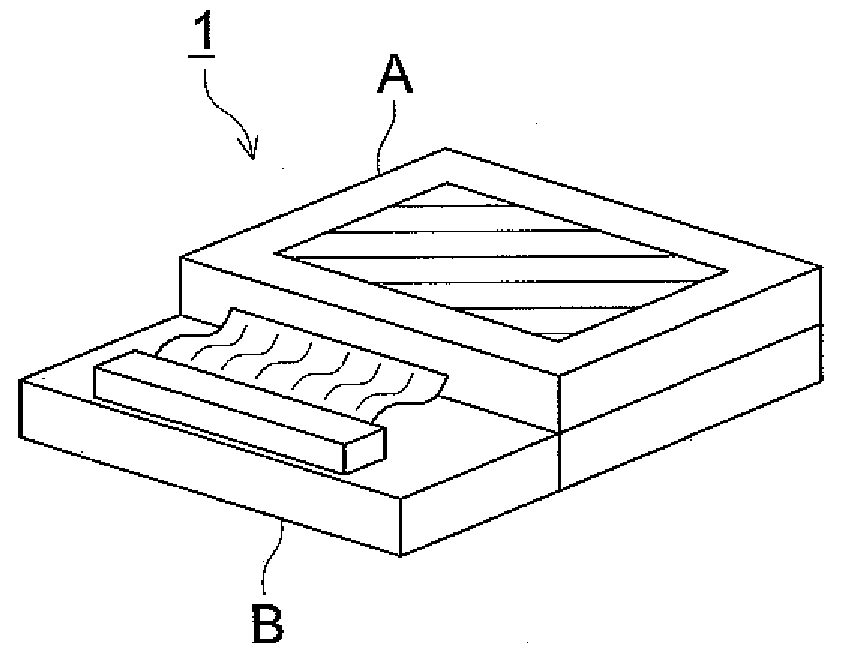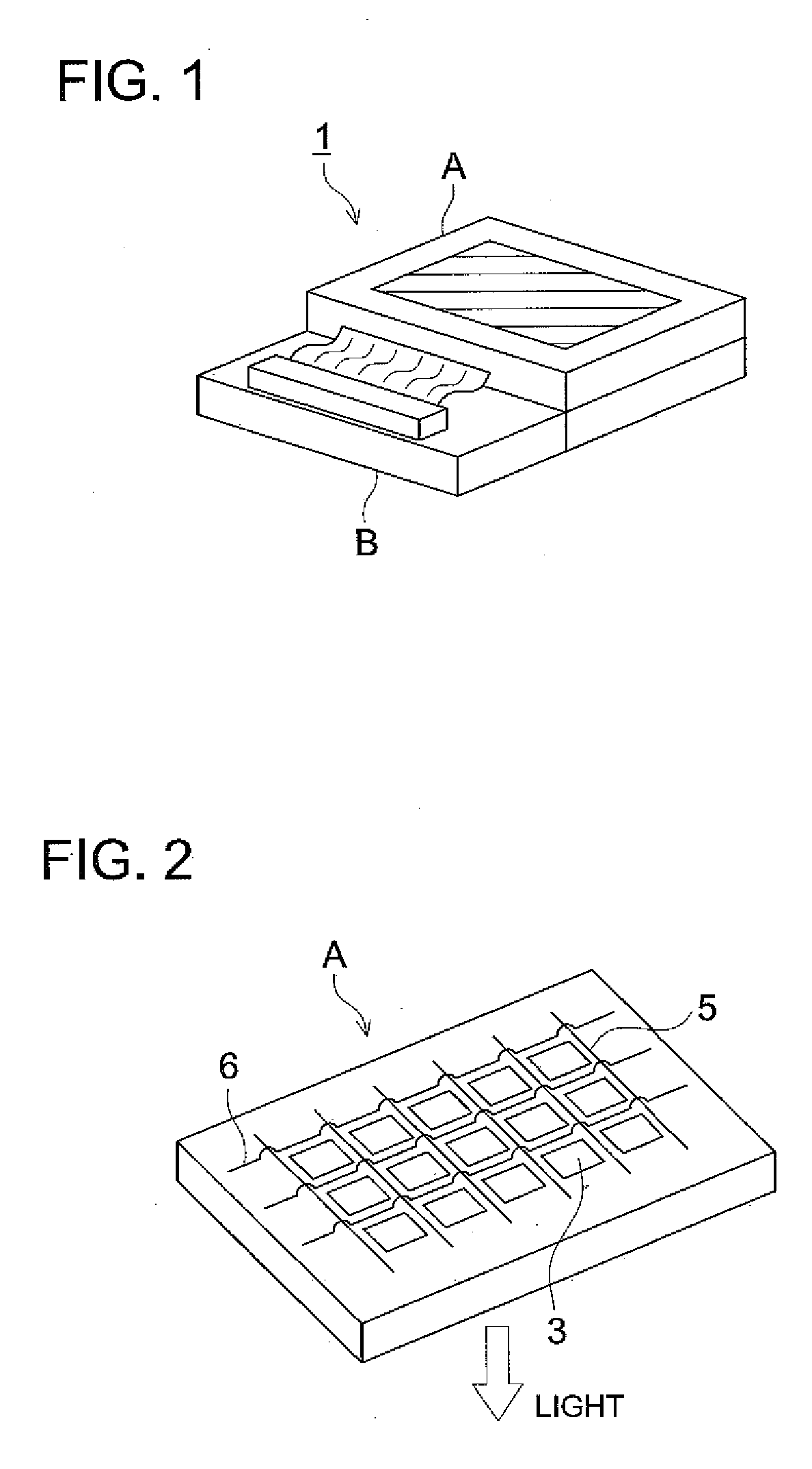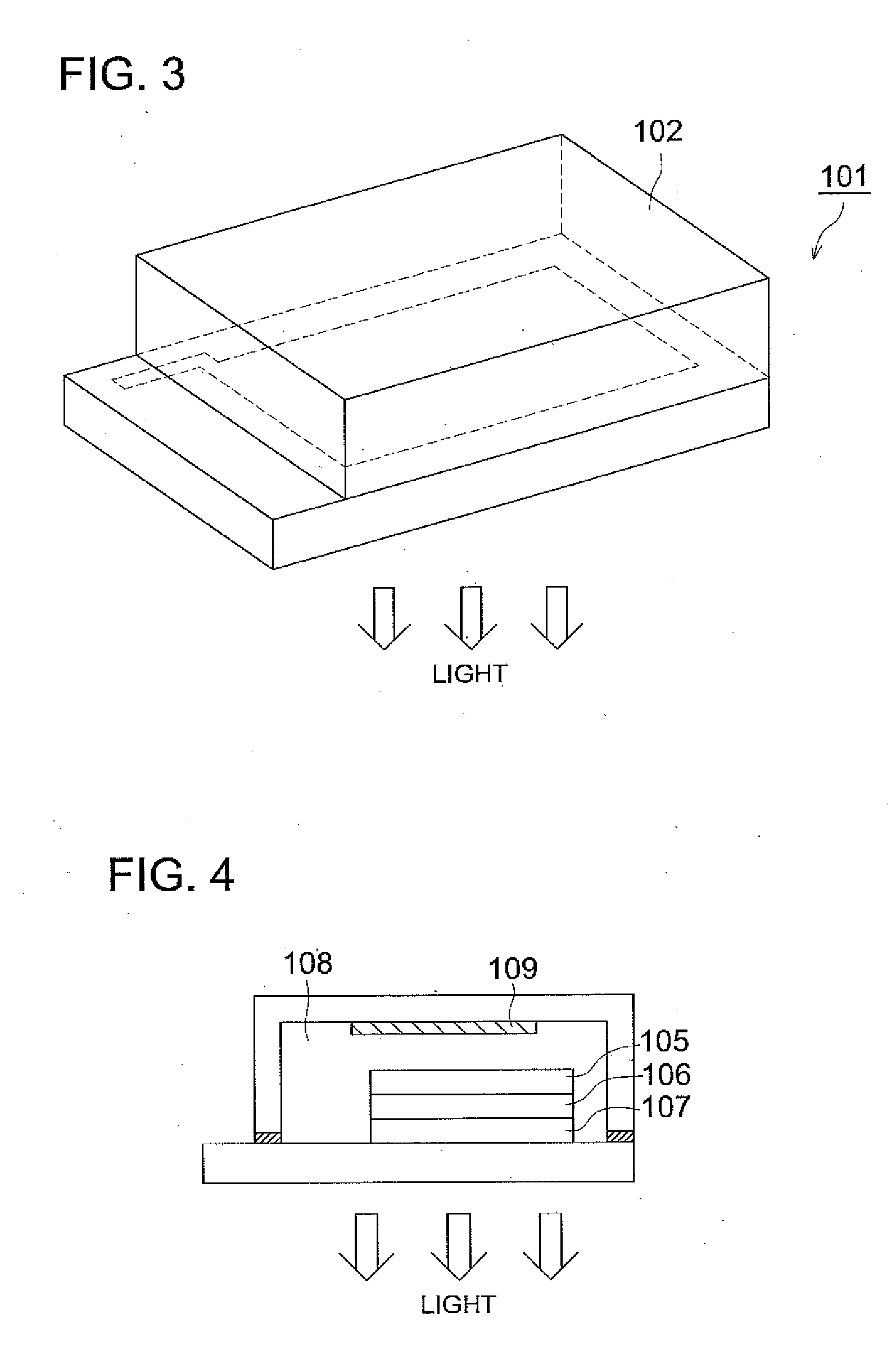Compound, electroluminescent element containing the same, illuminating device and display device
a technology of electroluminescent elements and compounds, applied in the direction of organic semiconductor devices, group 3/13 element organic compounds, group 5/15 element organic compounds, etc., can solve the problems of poor emission lifetime of elements compared to conventional elements, inability to achieve a level of practical use, and large degradation of emission lifetimes, etc., to achieve high external extraction quantum yield and long lifetime
- Summary
- Abstract
- Description
- Claims
- Application Information
AI Technical Summary
Benefits of technology
Problems solved by technology
Method used
Image
Examples
example 1
Synthesis of Exemplified Compound BD-6
[0197]Ligand L-3 was synthesized as described below, and by employing above Ligand L-3, Exemplified Compound BD-6 of the present invention was synthesized.
>
[0198]Dissolved in 40 ml of tetrahydrofuran (THF) were 4(n-octyl)phenylboronic acid (15.2 g, 65 mmol) and 1,3-dibromobenzene (11.8 g, 50 mmol), and 10 ml of pure water and potassium carbonate (17.3 g, 125 mmol), followed by replacement of the interior system with nitrogen.
[0199]After complete replacement with nitrogen, tetrakistriphenylphosphine palladium (PD(O)) (2.9 g, 2.5 mmol) was added, and heated reflux was carried out over 8 hours. After completing the reaction, conventional extraction, drying, and purification via column chromatography were carried out, whereby Compound 1 was prepared at a yield of 65% (11.2 g). According to a conventional method, boronic acid 2 was regulated. Thereafter, by employing above boronic acid 2 (10.2 g, 33 mmol) and 2-bromo-N-methylimidazole (4.8 g, 30 mmol...
example 2
Preparation of Organic EL Element 1-1
Present Invention
[0202]A substrate (NA-45, produced by NH Techno Glass Corp.), which was prepared in such a manner that ITO (indium tin oxide) was applied onto a 100 mm×100 mm×1.1 mm glass substrate to form a 100 nm thick film as an anode, was subjected to patterning. Thereafter, a transparent supporting substrate provided with the above ITO transparent electrode was subjected to ultrasonic cleaning employing isopropyl alcohol, followed by drying via desiccated nitrogen gas and cleaning via UV ozone for 5 minutes.
[0203]A solution, prepared by diluting poly(3,4-ethylenedioxythiophene)-polystyrene sulfonate (PEDOT / PSS, BAYTRON P Al 4083, produced by Bayer Co.) with pure water to reach 70% by weight, was applied onto the above supporting transparent substrate at 3,000 rpm for 30 seconds via a spin coating method so that a film was formed, followed by drying at 200° C. for one hour, whereby a 30 nm thick first positive hole transporting layer was pre...
example 3
Preparation of Organic EL Element 2-1
[0216]A substrate (NA-45, produced by NH Techno Glass Corp.) prepared in such a manner that ITO (indium tin oxide) was applied onto a 100 mm×100 mm×1.1 mm glass substrate to form a 100 nm thick film as an anode, was subjected to patterning. Thereafter, a transparent supporting substrate provided with the above ITO transparent electrode was subjected to ultrasonic cleaning employing isopropyl alcohol, followed by drying via desiccated nitrogen gas and cleaned with UV ozone for 5 minutes.
[0217]A solution, which was prepared by diluting poly(3,4-ethylenedioxythiophene)-polystyrene sulfonate (PEDOT / PSS, BAYTRON P Al 4083, produced by Bayer Co.) with pure water to reach 70% by weight, was applied onto the above supporting transparent substrate at 3,000 rpm for 30 seconds via a spin coating method so that a film was formed, followed by drying at 200° C. for one hour, whereby a 30 nm thick first positive hole transporting layer was prepared.
[0218]A solu...
PUM
| Property | Measurement | Unit |
|---|---|---|
| Weight | aaaaa | aaaaa |
| Solubility (mass) | aaaaa | aaaaa |
| Electroluminescence | aaaaa | aaaaa |
Abstract
Description
Claims
Application Information
 Login to View More
Login to View More - R&D
- Intellectual Property
- Life Sciences
- Materials
- Tech Scout
- Unparalleled Data Quality
- Higher Quality Content
- 60% Fewer Hallucinations
Browse by: Latest US Patents, China's latest patents, Technical Efficacy Thesaurus, Application Domain, Technology Topic, Popular Technical Reports.
© 2025 PatSnap. All rights reserved.Legal|Privacy policy|Modern Slavery Act Transparency Statement|Sitemap|About US| Contact US: help@patsnap.com



